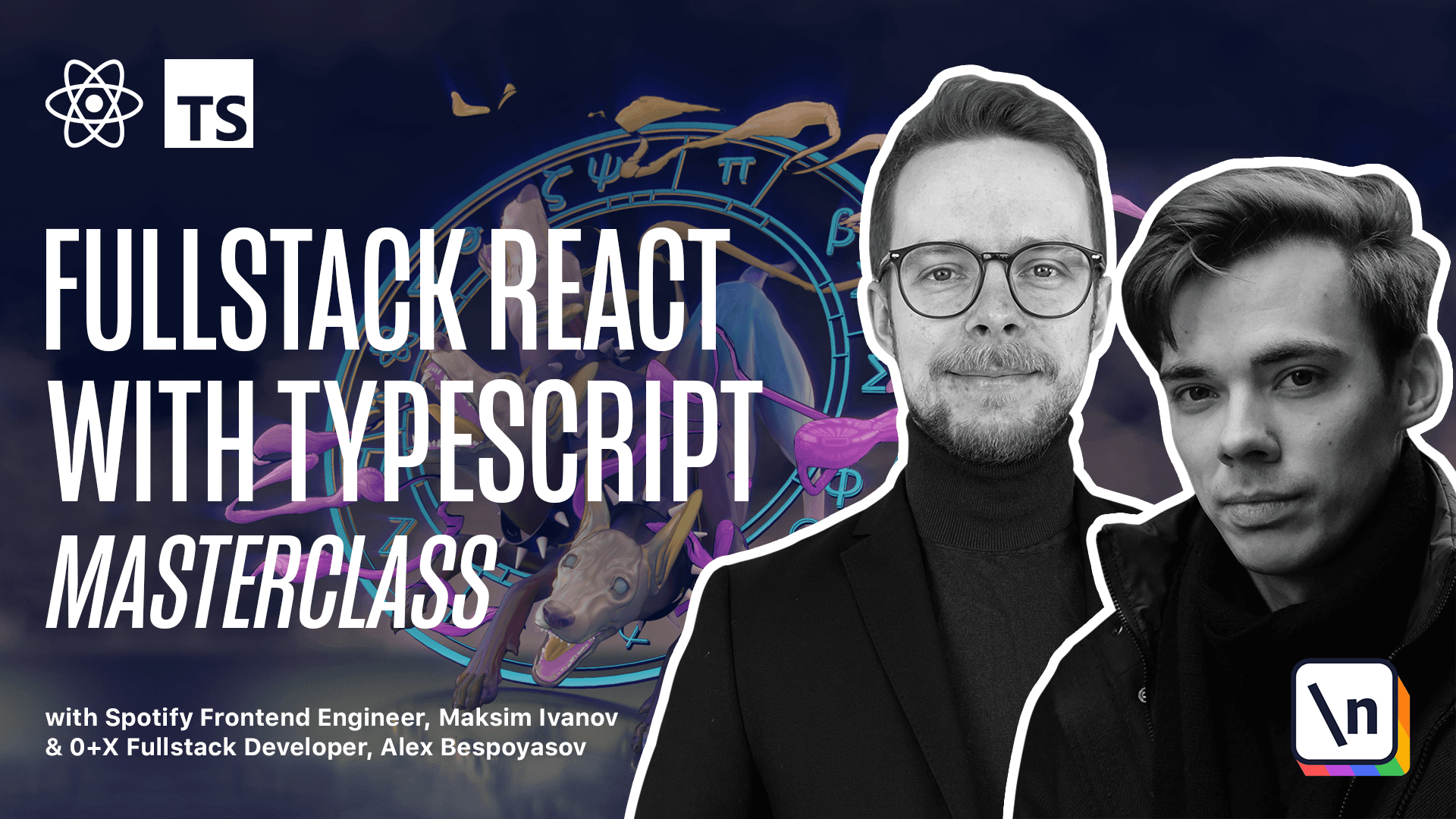Introduction
This lesson preview is part of the Fullstack React with TypeScript Masterclass course and can be unlocked immediately with a single-time purchase. Already have access to this course? Log in here.
Get unlimited access to Fullstack React with TypeScript Masterclass with a single-time purchase.

[00:00 - 00:06] Alright, in this part of the course we will build our first React TypeScript application. We will bootstrap the file structure using create React App CLI.
[00:07 - 00:15] If you haven't heard about it yet, no worries, I will explain everything you need to know. I will show you the file structure it generates and then go through each file and explain the purpose and why is it created.
[00:16 - 00:20] Then we'll create our components. You will see how to use TypeScript to specify the type of the props.
[00:21 - 00:27] We'll briefly discuss the difference between types and interfaces. We'll mostly work with the functional components because this is the most popular approach right now.
[00:28 - 00:36] We'll also discuss using JavaScript libraries in TypeScript projects. Some of them have types, type definitions provided by default, and some of them will require installing some additional packages.
[00:37 - 00:41] Our application will store the state on the backend. So we'll also discuss how to use the fetch function using TypeScript.
[00:42 - 00:53] So in this chapter, we'll cover creating components, defining props, using state, handling events, working with refs, styling components, using external libraries, and making network requests. That's quite a lot, so let's hurry up.